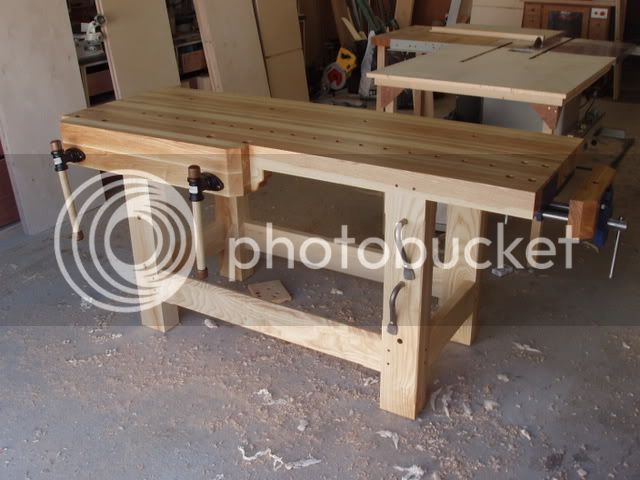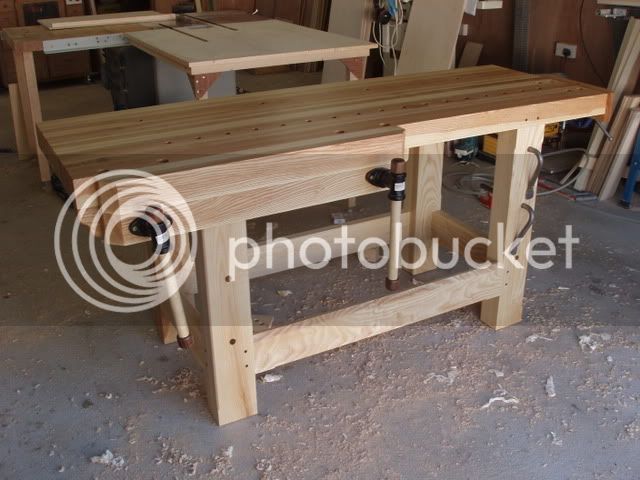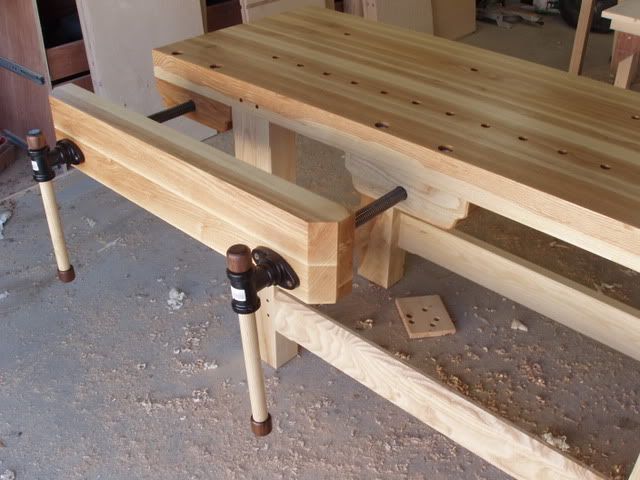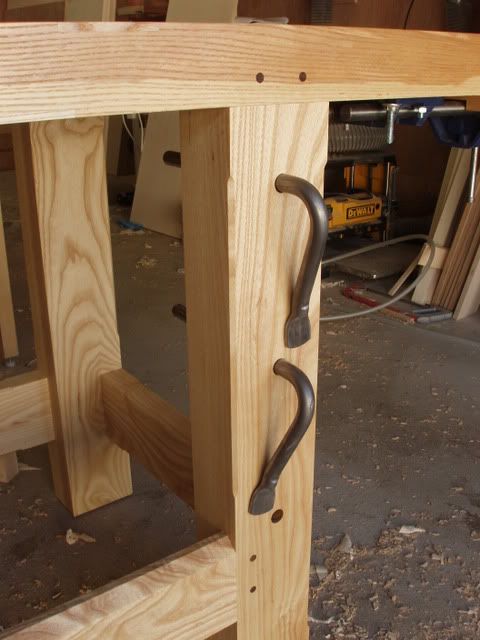For quite a while I been meaning to build a workbench. When I seen the Holtzapffel Workbench in Woodworking Magazine I decided to go for it. It's quite a simple design but easily covers my needs and hopefully more that I haven't acquired yet. It's made from ash. I started with the top. I made this in sections, gluing three lengths together at a time to form individual pieces appox 6" x 3" x 74". I then joined these together one at a time till I came to full width. On the last section I planed it down till I got 24" full width. I was as careful as I could keeping it as flat as possible as I went but I knew it would still need flattening when finished. This is where I chickened out. I got the guy who built my stairs recently to pass it through his industrial drum sander. He also trimmed it to length 72". When it comes time to flatten it for the first time I hope to have built up enough hand plane skill to have the confidence to do it myself.
I really enjoyed making the base. The legs are made up of two pieces laminated together and the stretchers individual pieces. I cut all the tennons on the tablesaw using the dado blade. For the mortices I used my router to start. I only felt comfortable bringing this so deep and finished them off with a hammer and chisel. I used the drawboring technique described by Christopher Schwarz on all the mortice and tennons. I got a bit of a fright after offsetting all the holes and actually seeing the distance between them when I assembled the base. I needn't have worried, I used walnut dowels made with the veritas 3/8" dowel cutter. It's a brilliant technique and would highly recommend it for heavy joinery like this. I turned the handles on an old lathe my uncle gave me, also from ash with walnut ends.
Finally, I also purchased Chris' book 'Workbenches from Design & Theory to Construction & Use' from his website www.lostartpress.com. If you get it from here you also get a CD with an electronic version and the main man also signs the book. It's brilliant I can't recommend it highly enough. As the title says it covers everything.
Anyway on to some pictures (sorry no WIP). For the eagle eyed among you spot the patch.





Neil
PS a sketchup drawing of the bench can be downloaded from here.
I really enjoyed making the base. The legs are made up of two pieces laminated together and the stretchers individual pieces. I cut all the tennons on the tablesaw using the dado blade. For the mortices I used my router to start. I only felt comfortable bringing this so deep and finished them off with a hammer and chisel. I used the drawboring technique described by Christopher Schwarz on all the mortice and tennons. I got a bit of a fright after offsetting all the holes and actually seeing the distance between them when I assembled the base. I needn't have worried, I used walnut dowels made with the veritas 3/8" dowel cutter. It's a brilliant technique and would highly recommend it for heavy joinery like this. I turned the handles on an old lathe my uncle gave me, also from ash with walnut ends.
Finally, I also purchased Chris' book 'Workbenches from Design & Theory to Construction & Use' from his website www.lostartpress.com. If you get it from here you also get a CD with an electronic version and the main man also signs the book. It's brilliant I can't recommend it highly enough. As the title says it covers everything.
Anyway on to some pictures (sorry no WIP). For the eagle eyed among you spot the patch.





Neil
PS a sketchup drawing of the bench can be downloaded from here.
































